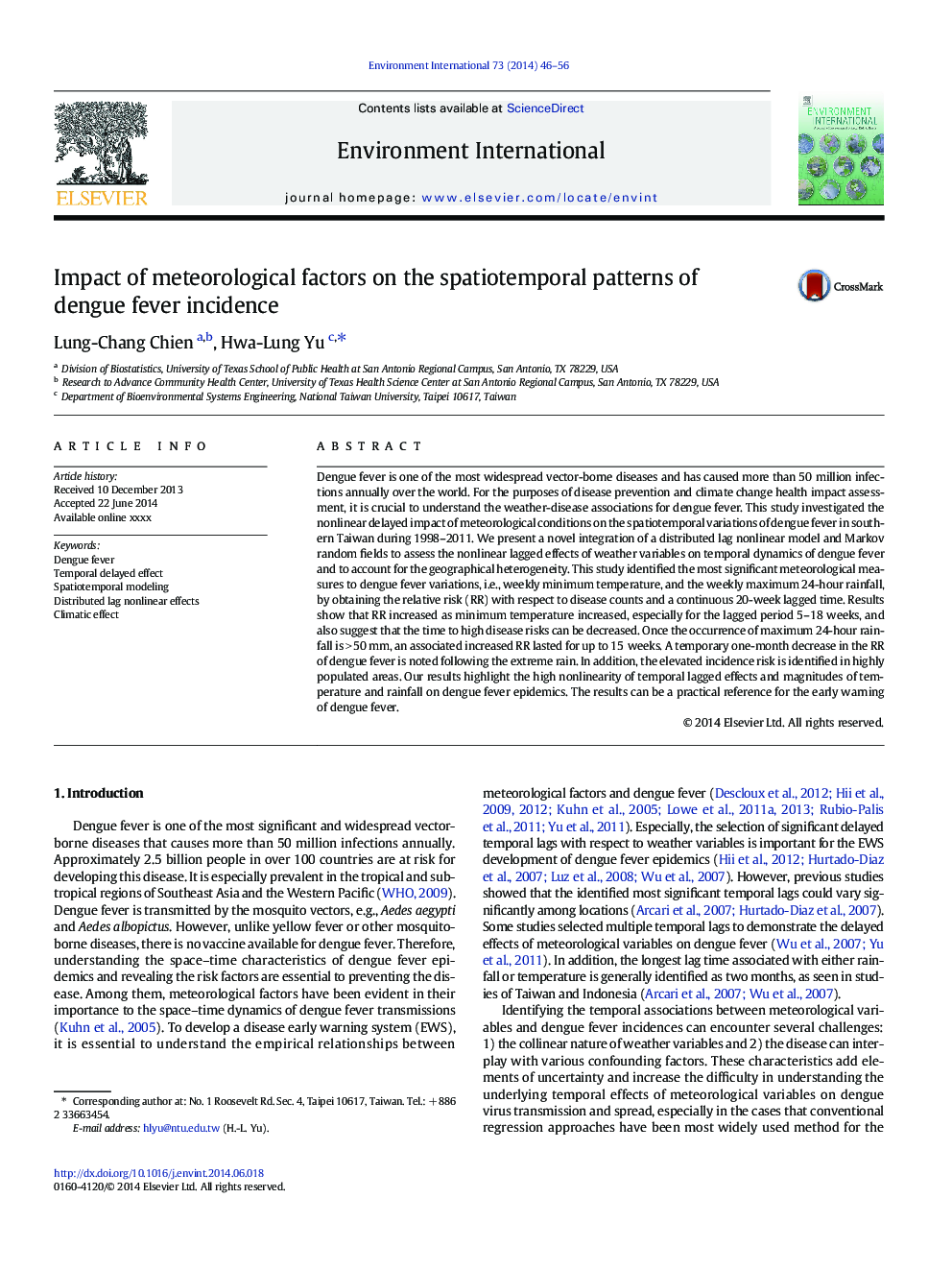| Article ID | Journal | Published Year | Pages | File Type |
|---|---|---|---|---|
| 6313763 | Environment International | 2014 | 11 Pages |
Abstract
Dengue fever is one of the most widespread vector-borne diseases and has caused more than 50Â million infections annually over the world. For the purposes of disease prevention and climate change health impact assessment, it is crucial to understand the weather-disease associations for dengue fever. This study investigated the nonlinear delayed impact of meteorological conditions on the spatiotemporal variations of dengue fever in southern Taiwan during 1998-2011. We present a novel integration of a distributed lag nonlinear model and Markov random fields to assess the nonlinear lagged effects of weather variables on temporal dynamics of dengue fever and to account for the geographical heterogeneity. This study identified the most significant meteorological measures to dengue fever variations, i.e., weekly minimum temperature, and the weekly maximum 24-hour rainfall, by obtaining the relative risk (RR) with respect to disease counts and a continuous 20-week lagged time. Results show that RR increased as minimum temperature increased, especially for the lagged period 5-18Â weeks, and also suggest that the time to high disease risks can be decreased. Once the occurrence of maximum 24-hour rainfall is >Â 50Â mm, an associated increased RR lasted for up to 15Â weeks. A temporary one-month decrease in the RR of dengue fever is noted following the extreme rain. In addition, the elevated incidence risk is identified in highly populated areas. Our results highlight the high nonlinearity of temporal lagged effects and magnitudes of temperature and rainfall on dengue fever epidemics. The results can be a practical reference for the early warning of dengue fever.
Related Topics
Life Sciences
Environmental Science
Environmental Chemistry
Authors
Lung-Chang Chien, Hwa-Lung Yu,
